.9.01.2013

Asteroid Apophis to pass near Earth on Wednesday
An asteroid aimed for close encounters with Earth in 2029 and 2036 make its closest approach of the year, 9 million miles, on Wednesday night. Astronomers are watching the passage closely.
Nostalgic for last year's Doomsday worries? You may enjoy pondering an asteroid, named Apophis, passing overhead Wednesday. It also aims for close encounters with Earth in 2029 and 2036.
The asteroid, some 886 feet across, will pass within 9 million miles of Earth on Wednesday, its closest approach this year. The asteroid had attracted a great deal of interest in 2004, when it was discovered, after some estimates suggested it had a chance of hitting Earth in 2036. That possibility was later dismissed after better estimates of its orbit arrived.
Because a tiny chance still exists of the asteroid hitting Earth in 2036, "scientific interest in Apophis is acute, and it's very important to learn as much as we can about this object when it gets close enough for physical observations," says a recent statement from NASA's Jet Propulsion Laboratory (JPL) in Pasadena, Calif. Radar observations of the asteroid, scheduled for February, should refine orbital track analyses of the asteroid's impact chances.
If it ever hit Earth, the asteroid would deliver an impact blast on land of 141 megatons, almost three times stronger than the biggest H-bomb ever tested, according to Purdue University's impact calculator.
"Due to the proximity of its orbit to Earth, Apophis is being considered as a potential target for both robotic and crewed spacecraft missions," the JPL statement notes.
But instead of any landing this year, the Wednesday night passage will be too dim for even backyard telescopes, says Slooh Space Camera's Patrick Paolucci, in a statement. Slooh's online cameras will make views of the asteroid available in a webcast on Wednesday night.
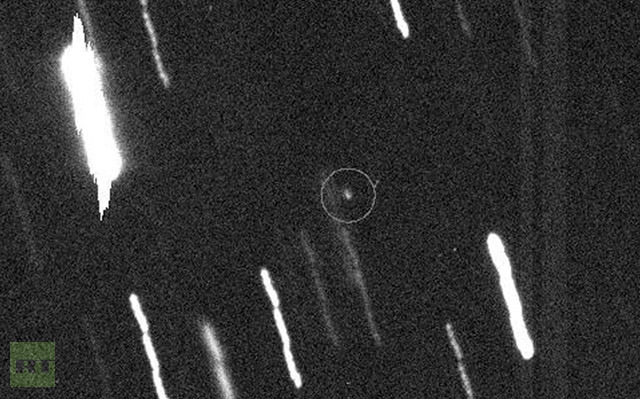
This NASA image shows asteroid Apophis. The asteroid Apophis, which should barely touch the Earth in 2029 and could possibly hit in 2036, approaches earth on January 9, 2013 at a distance of 14.4 million kilometers, astronomers said January 8, 2012. (AFP Photo/NASA/JPL UH/IA)
-
Quelle: NASA
-
Update: 10.01.2013
-
Asteroid Apophis 20% bigger than thought
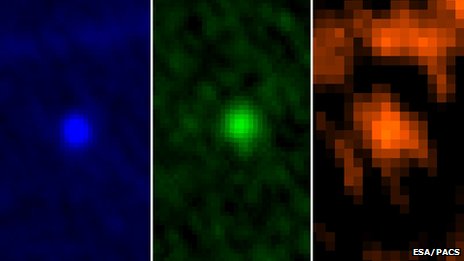
Esa's Herschel Space Observatory captured Apophis in its field of view in the far-infrared light in January 2013
-
PARIS: An asteroid believed to pose a remote risk of colliding with Earth in 2036 is 20% bigger than previously thought, the European Space Agency (ESA) said.
In a press release, ESA said its Herschel deep-space telescope had scanned a space rock called 99942 Apophis last weekend as it headed towards its closest flyby with our planet in years.
Previous estimates bracketed the asteroid's average diameter at 270 metres (877 feet) give or take 60m (195 feet), representing a mass that would equal the energy release of a 506-megatonne bomb, according to NASA figures.
From 270 to 325-metre diameter
In a two-hour observation, Herschel returned a diameter of 325m (1,056 feet), with a range of 15m (48.75 feet) either way, ESA said.
"The 20-percent increase in diameter, from 270 to 325m (877 to 1,056 feet), translates into a 75% increase in our estimates of the asteroid's volume or mass," said Thomas Mueller of the Max Planck Institute for Extraterrestrial Physics in Garching, Germany, who led the data analysis.
Named after the god of evil and darkness in Egyptian mythology, Apophis sparked a scare when it was first detected in 2004.
Early calculations suggested a 2.7% probability of collision in 2029, the highest ever for an asteroid, but the risk was swiftly downgraded after further observations.
Apophis also darker than thought
A distance of 35,000 kilometres (22,500 miles), meaning it will flit past inside the orbit of geostationary satellites, is the latest estimate for 2029, ESA said.
There remains a tiny impact risk of about one in 250,000 on April 13, 2036, when it will pass even closer to Earth, according to NASA's Jet Propulsion Laboratory (JPL).
Astronomers hope that today’s flyby, with Apophis due to pass at a distance of some 14.5 million kilometres (nine million miles), will help them fine-tune the 2029 and 2036 estimates.
Herschel, using thermal sensors, also found that Apophis is somewhat darker than thought, ESA added.
Only 23% of light that falls on it is reflected, and the rest is absorbed by the asteroid. Previous estimates of this reflectivity, known as albedo, were in the order of 33%.
February 15: asteroid 2012 DA14 to pass at 34,500km
This finding is important because asteroids experience something called the Yarkovsky effect, or an increase in thrust that comes from alternate heating and cooling as the rock slowly turns in space.
Over time, this momentum can change the body's trajectory as it moves through the Solar System.
On February 15, a 57-metre (185-feet) asteroid, 2012 DA14, will skim the planet at just 34,500 kilometres (21,600 miles), making the narrowest approach so far of any detected asteroid.
Quelle: ESA-
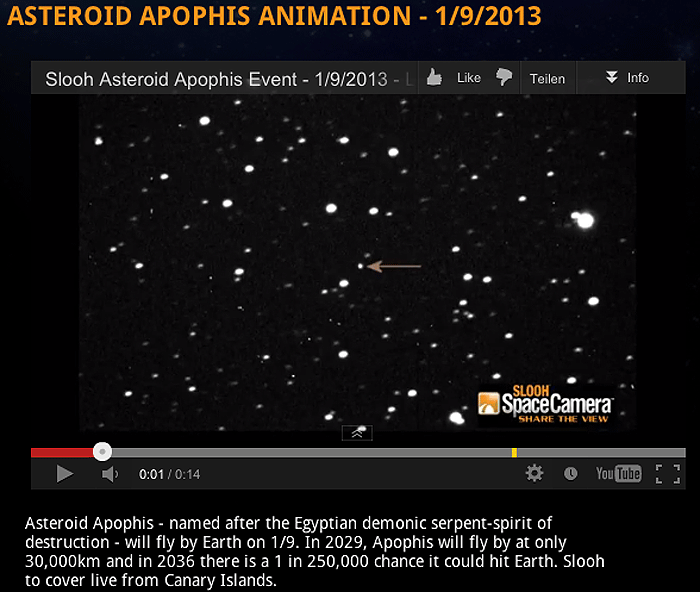
-
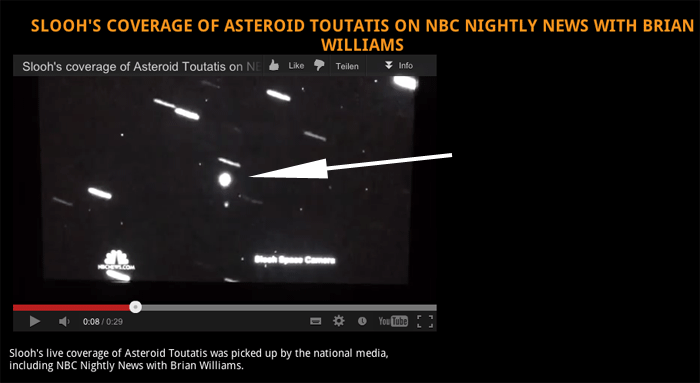
-
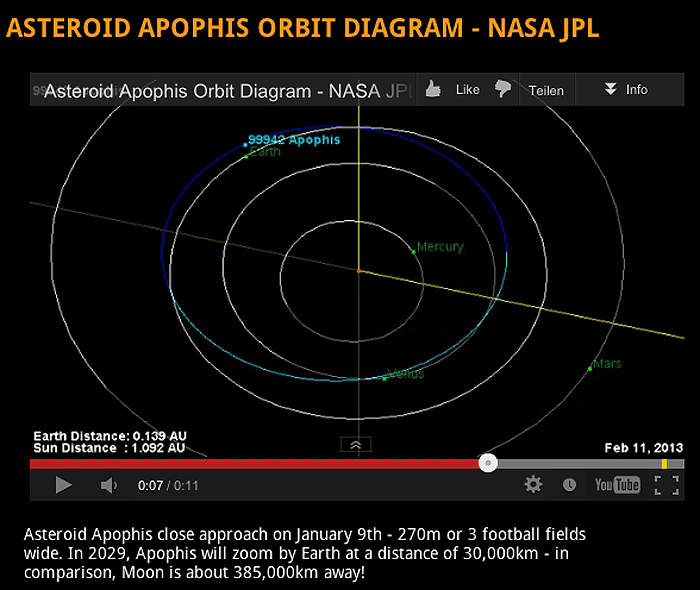
6367 Views
